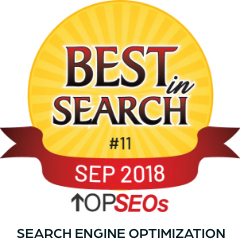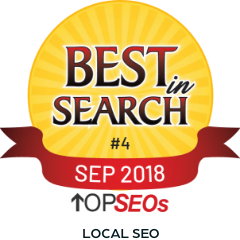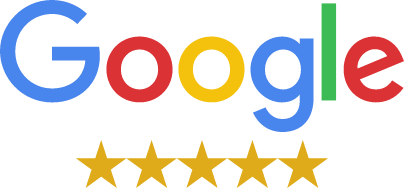What’s the Latest in Internet Marketing?
For 2014 the biggest buzz so far has been Google’s Hummingbird algorithm. It’s often reported as their biggest change since 2010 and as affecting 90% of searches. That’s true, but it’s been around since the fall of 2013 and hasn’t caused nearly the level of disruptions that Panda and Penguin did. For the most part we see the continuation of prior algorithm trends in continued spam fighting and in pleasing the visitor.
Lets take a closer look at this years trends in online marketing and advertising.
SEO and SEM
Panda, Penguin, and now Hummingbird. Although there’s been claims otherwise, search-engine optimization (SEO) and search-engine marketing (SEM) are certainly not dead and the key principles and techniques remain. But “grey-hat” techniques are loosing effectiveness, making it more important to focus on quality content, organic link building, and true social signals. Together with a few other ongoing trends, this will give us a good roadmap.
What’s Up with Hummingbird?
Google’s latest effort is intended to better serve mobile users by allowing queries more like Siri’s voice-input questions instead of keywords typed on a tiny keypad. The new algorithm uses semantic methods and a “knowledge graph” to approximate the intended meaning of the query. This emphasis also means that queries are assumed to be in the form of questions.
The old search-engine parameters remain pretty much the same. The Page-Rank algorithm is very much alive, and feeds its assessment of quality, authority, and relevance into Hummingbird.
Content is Critical
As a result, content remains king. The search engines still do their best to distinguish “real” pages from spammy pages to give visitors what they like and keep their advertising valuable. Additionally, growing your website with genuinely useful content keeps people on your site longer (building page rank), encourages sharing and engagement (building social signals and improving page rank), and builds your authority.
Optimizing those pages is different these days. The days of keyword stuffing to 1 – 3% density are long gone. Search-engine algorithms continue to improve in their ability to weed out content that visitors aren’t interested in. Many experts predict that long-tail keywords will make a comeback. Latent Semantic Indexing (LSI), a way of identifying words and phrases that correlate with particular topics or products, now helps search engines “understand” the meaning of a page. Using numerous LSI terms yourself helps page-rank, and they can be used more densely than you could ever get away with for a couple of keywords.
Other Trends for 2014
With backlink sites mostly killed off, algorithms continue to improve their ability to identify artificial links, primarily by analyzing the diversity of the places they come from. It’s increasingly important to generate links naturally by encouraging social sharing. Some experts have gone so far as to say that you shouldn’t artificially create any backlinks at all.
Here are a few more trends that are continuing into 2014.
- Social Media — Social signals remain a vital part of internet marketing, and it’s become necessary to diversify beyond the big three (FaceBook, Twitter, and LinkedIn) into additional social networks such as Pinterest, Tumbler, and Instagram. A recent study revealed that the best business-to-business marketers use an average of 7 social networks.
- Guest Blogging — There’s been some debate as to whether or not this means of promotion and link building is still viable. Matt Cutts says go for it only on highly-target, relevant, high-quality blogs, and avoid anything remotely like a paid link. Not even quid pro quo.
- Google+ — Many experts have written Google+ off as a failed attempt to compete with FaceBook. But it’s still useful in promoting businesses and improving website rankings.
- Mobile — Last year, 2013, marked a tipping point; smart phones and tables are now the majority of computer sales. Optimizing websites for these devices is now critical.
Internet Advertising
Retargeting has become an important part of many large businesses’ online advertising strategy, providing increased exposure at a modest budget. Retargeted ads track the websites a person subsequently visits by using browser cookies; they’ll then see the same or similar advertisements on those other sites as well. This service is also affordable by small businesses, and provides several benefits.
- repeated touches
- branding
- looking like a big company (“gee, their ads are everywhere”)
Privacy concerns, including state laws, may reduce the effectiveness of these sorts of ads in the future, however.
The swing to mobile also affects online ads. Materials need to be clean, uncluttered, and responsive. The greatest growth in online spending has been in mobile and video formats. Spending on pay-per-click (PPC) search ads and pay-per-view (PPV) branding ads remain strong.
What Now?
Despite some important recent changes, the best practices of SEO, internet marketing, and internet advertising remain the same. Give the search engines and your prospective customers what they want by providing quality and interesting material that encourages sharing. There’s been lots of chatter about Hummingbird and other algorithm changes, but remember that Google has ways of identifying pages that have significant revisions in response to ranking algorithm changes.
Over the years online marketing has matured from tricks to tactics, and now to strategy. That strategy needs to be less about simple keyword optimization, and more about providing value and an inclination to share. It’s marketing, after all.








